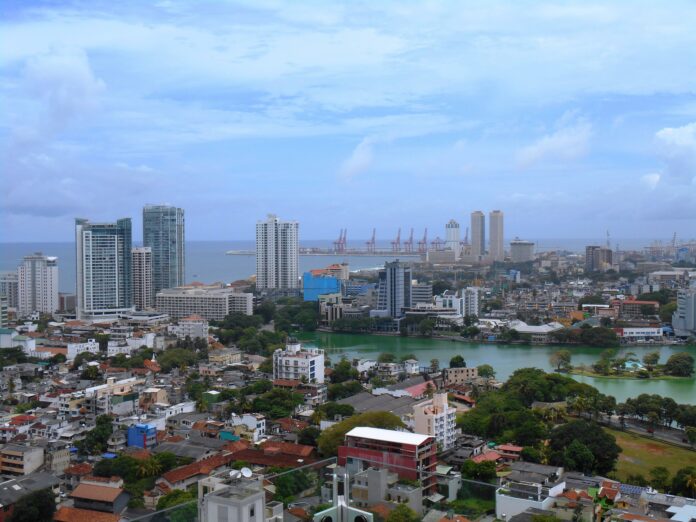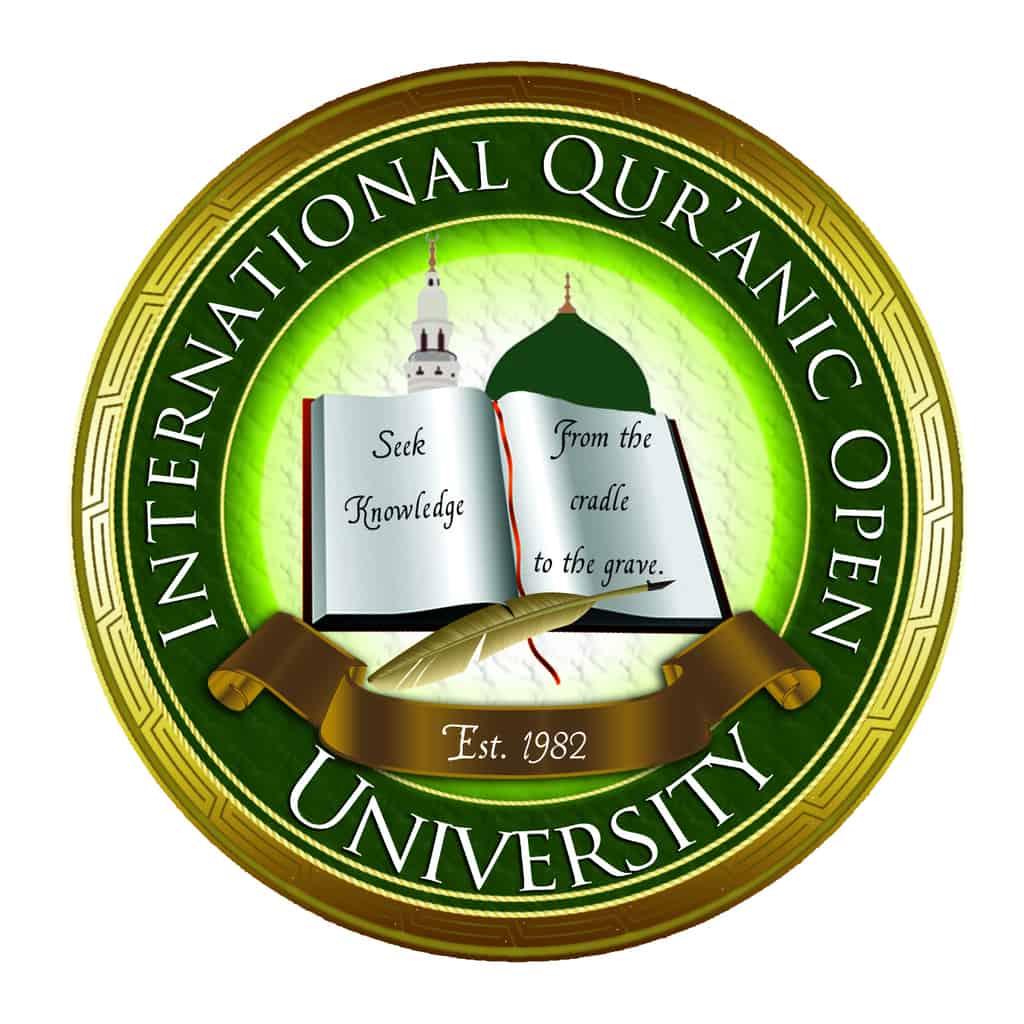
On November 8, 2023, the U.S. International Development Finance Corporation (DFC) announced its commitment to half a billion dollars in financial support towards the construction of a deepwater shipping container terminal in Sri Lanka at the existing Port of Colombo.
Sri Lanka’s attempts to strengthen its economy by building investment zones for international commerce has caused them to take on around $8 billion debt in loans from China through its Belt and Road Initiative in recent years. Sri Lanka seems to be caught in between different strategies by multiple world leaders attempting to benefit from their strategic position in the Indian Ocean which facilitates access to lucrative global trade routes.
DFC Chief Executive Officer Scott Nathan traveled to Sri Lanka to launch $553 million in financing by “private-sector loans” to Colombo West International Terminal Private Limited in an effort to “expand its shipping capacity, creating greater prosperity for Sri Lanka – without adding to sovereign debt – while at the same time strengthening the position of our allies across the region.” according to the DFC .
At least one of the allies the CEO of the DFC is seeking to strengthen ties with is India.
According to an article by the Indian news outlet EnergyWorld.com: “The U.S. will provide $553 million in financing for a port terminal in Sri Lanka… being developed by India’s billionaire Gautam Adani, as New Delhi and Washington look to curtail China’s influence in South Asia.”
According to EnergyWorld, “The deepwater West Container Terminal in Colombo is the US government agency’s largest infrastructure investment in Asia, and among its biggest globally.”
U.S. Ambassador to Sri Lanka Julie Chung said, “The $553 million investment by DFC for the long-term development of the Port of Colombo’s West Container Terminal will facilitate private- sector-led growth in Sri Lanka and attract crucial foreign exchange inflows during its economic recovery.”
What brought on Sri Lanka’s need of “economic recovery”? What issues facilitated the need for an economic recovery to begin with?
“Successive governments have failed to enact policies that insert Sri Lanka into the global supply chain,” says a report from the Council on Foreign Relations (CFR). “Sri Lanka’s debt obligations have expanded as politicians invest in infrastructure projects, including a number of commercially un-viable vanity projects.”
The CFR continues, “Sri Lanka has raised this funding from both international investors, who account for about 37 percent of the country’s overall debt profile, and bilateral creditors such as China and Japan. China is Sri Lanka’s largest bilateral creditor, accounting for about 10.8 percent of Sri Lanka’s overall debt.”
According to a report by Umesh Moramudali and Thilina Panduwawala. “Publicly available data from a number of Sri Lanka’s public institutions provided full visibility for the US$ 7.4 billion in Chinese debt outstanding at end-2021. Chinese lending was then 19.6 percent of public external debt…much higher than the…10-15 percent figures. A significant portion of Chinese debt has been recorded under state-owned enterprises, not the central government, but all of the Chinese debt was reported to the World Bank’s International Debt Statistics”.
According to a report by the environmental federation Friends of the Earth International, Sri Lanka division: “The [former ruling] Rajapaksa family [until June 2022] controlled up to 70% of the national budget. They have been accused of abuse of power, nepotism, corruption, and looting public money to invest in other countries.”
Friends of the Earth International continues, “The International Monetary Fund deemed that the country lost its debt sustainability in September 2020, when its debt level increased to 101% of its income… Sri Lanka owes more than $51bn (US dollars) to foreign lenders, including $6.5bn to China.”
To fill the gap, says Friends of the Earth, “The government printed over 2.3 trillion Sri Lankan rupees (equivalent to $6.5bn USD), a move which has catapulted Sri lanka’s inflation to the highest in Asia — from 29.8% in May 2022 to an all-time high of 54.6% in June [2022].”
“China, which had strong ties with the Rajapaksas and benefited from numerous policy decisions under them, has not provided the debt relief Sri Lanka desperately needs,” says the CFR article. “Though Sri Lanka has negotiated with China on debt restructuring, Chinese officials are unlikely to agree to Sri Lanka’s terms because they prefer refinancing loans and fear it would set a precedent for other countries facing similar debt issues.”
China’s strong ties with former government members bolstered its presence in Sri Lanka’s financial infrastructure and further burdened its debt load. The development of two key ports in Sri Lanka, the Port of Colombo as well as the port of Hambantota, have brought much debt by foreign loans from China to Sri Lanka in past and recent years. One could question, is the addition of a new DFC-sponsored deepwater shipping container terminal in the Port of Colombo in the best interest of the country?
Friends of the Earth International considers: “The China-funded project to build ‘Colombo port city,’ which would be the financial hub of the Belt Road Initiative, has also deepened debt. To date, the developers have not even paid the royalties owed to the government for sand and rock material mined from the ocean and countryside – amounting to 465mn Sri Lankan Rupees.”
“Hambantota Harbour, recently built with a loan from China, has been leased out to the Chinese company for 99 years due to Sri Lanka’s inability to pay the debt,” says Friends of the Earth. “However, the leased amount (approximately $1bn) has not returned to the National Treasury but instead been invested in unknown infrastructure. Both Hambantota Harbour and Colombo Port City have no or minimal benefits to the Sri Lankan economy, while their environmental and social damage is very high.”
Sri Lanka suffering a financial crisis has caused hardships and poverty for the population. Does repayment of these high debts slow down financial recovery? According to Friends of the Earth International: “Hamilton Reserve Bank Ltd., which holds more than $250mn of Sri Lanka’s 5.875% International Sovereign Bonds filed a lawsuit in June 2022 in a New York federal court seeking full payment of principal and interest. Other bond holders, including US retirement systems, Fidelity Investments, BlackRock, T. Rowe Price, Lord Abbett, JPMorgan, PIMCO, and Neuberger Berman are in the queue to restructure lending.”
What other scenarios in Sri Lanka are prompting New Delhi and Washington to look to curtail China’s influence in South Asia? How much influence has China had and what negative effects has this influence caused Sri Lanka as a whole?
“For years, several China-linked projects in Sri Lanka have come under fire for being ‘white elephants’ that have failed to contribute significantly to its economy, but a free-trade agreement between both countries, policy revamp and more involvement by joint ventures could turn the tide,” analysts say, according to a recent article in the South China Morning Post (SCMP).
“Among the underperforming projects are the Mattala Rajapaksa International Airport (MRIA), built with US$191 million financing from the Exim Bank of China; Hambantota International Port (HIP) built by China Harbour Engineering Company (CHEC) with US$1.3 billion of credit from China; and the Port City Colombo (PCC), a US$1.4 billion project also built by CHEC. All three projects are part of the Belt and Road Initiative, a China-led initiative aimed at improving trade and economic integration across Asia, Europe and Africa,” SCMP further reports.
According to a quote from SCMP, “China was Sri Lanka’s largest lender, holding almost 20 percent of the country’s public external debt as of the end of 2021… It remains key to the ongoing Sri Lankan debt-restructuring negotiations led by the International Monetary Fund (IMF). In October, Sri Lanka reached an agreement with the Exim Bank of China to cover about US$4.2 billion of its debt, a crucial step in the country’s ongoing IMF programme.”
Umesh Moramudali, an economics lecturer from the University of Colombo noted that port operator China Merchants Port had been trying to entice other Chinese investors to be involved in projects in Sri Lanka. “There’s potential there and I think that it will expand with time,” said Moramudali,” who is also a co-author of a paper on Chinese lending to Sri Lanka, according to the SCMP.
Does the restructuring of debt incurred through China’s BRI loans bring a brighter financial outlook for Sri Lanka’s debt crisis? Or is the debt so heavy they have no other option?
“China will have to play a major role in Sri Lanka’s debt restructuring process, with US$ 7.4 billion or 19.6 percent of outstanding public debt owed to China at the end of 2021 (out of a total of US$ 37.6 billion in total public external debt excluding central bank debt), and it will be the first time a major Asian Belt and Road Initiative borrower is going through the process,” a report by Umesh Moramudali and Thilina Panduwawala also notes.
Does the business venture between India and the US for the development of the deepwater container terminal in Colombo’s port truly “create greater prosperity for Sri Lanka” or is the ultimate benefit for India and US?
In another report earlier this year by the South China Morning Post, “Sri Lanka and India have cemented their long-standing ties with a rush of energy and maritime deals amid a push by New Delhi for more strategic influence in the region to counter China’s rising clout – even as analysts warn Colombo against becoming over reliant on its larger neighbor… Both South Asian nations agreed to boost maritime, air, energy and power cooperation, among other areas.”
According to another report by CFR, America and India have come together to bring competition to China’s powerful grip on world trade through its Belt and Road Initiative.
“President Joe Biden announced an India-Middle East-Europe Economic Corridor (IMEC), which seeks to counter the inroads China has made through its Belt and Road Initiative (BRI) by linking India, the Arabian Gulf, and Europe. [In addition to] BRI, China could convert its economic clout into political sway, pressuring countries not to take stances that run counter to China’s interests,” states the CFR. “China’s investments in overseas ports would give its military greater power projection capabilities.”
Facts show that Sri Lanka’s position in the Indian Ocean makes it a popular hub for financial gain to many countries in the region and abroad. Sri Lanka has taken on debt that has caused a financial crisis that hurts the economy and burdens the country’s infrastructure. The many lives of people not fortunate enough to benefit from these high profit deals may hang in the balance.
The DFC states on their website their purpose:
“DFC makes America a stronger and more competitive leader on the global development stage with greater ability to partner with allies on transformative projects. Further, we provide the developing world with financially sound alternatives to unsustainable and irresponsible state-directed initiatives.”
The DFC seems to also present itself as a viable alternative to China’s Belt and Road Initiative. In the long run, all loans wherever they are from, must be repaid with added interest.
Adeelah Ahmad





